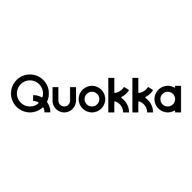

Synopsys Software Risk Manager and Q-mast compete in the risk management software space. Synopsys appears to have the upper hand with its robust analytical capabilities and comprehensive risk assessment tools, while Q-mast stands out for flexible integration and ease of use.
Features: Synopsys provides detailed analytics, integrated vulnerability detection, and focuses on in-depth analysis. Q-mast offers seamless integrations, advanced automation, and flexible reporting, prioritizing user-friendly interfaces and expandability.
Ease of Deployment and Customer Service: Synopsys's deployment offers in-depth configuration options, requiring tailored support, whereas Q-mast simplifies setup with a straightforward deployment model and efficient support.
Pricing and ROI: Synopsys involves higher setup costs but promises long-term returns through thorough analytics, while Q-mast offers competitive pricing with faster ROI due to streamlined implementation and updates.

Q-mast enhances mobile app security by embedding it into development workflows to detect risks before release. It provides defense-grade app scanning leveraging threat research to identify vulnerabilities and insights.
Designed for mobile developers, Q-mast empowers security and development teams to mitigate issues early, reducing costs and limiting zero-day attack exposure. Its capabilities in scanning and risk identification are backed by extensive threat research, making it a critical tool in app development lifecycles.
What are the key features of Q-mast?Q-mast is widely implemented across industries to prevent data breaches and fraud. It is especially favored in finance and healthcare sectors for compliance support, proving essential in highly-regulated environments.
Software Risk Manager is an application security posture management (ASPM) solution that enables security and development teams to manage their application security programs at enterprise scale. By unifying policy, test orchestration, correlation, prioritization, and built-in static application security testing (SAST) and software composition analysis (SCA) engines, organizations can streamline their security activities across the enterprise.
We monitor all Static Application Security Testing (SAST) reviews to prevent fraudulent reviews and keep review quality high. We do not post reviews by company employees or direct competitors. We validate each review for authenticity via cross-reference with LinkedIn, and personal follow-up with the reviewer when necessary.